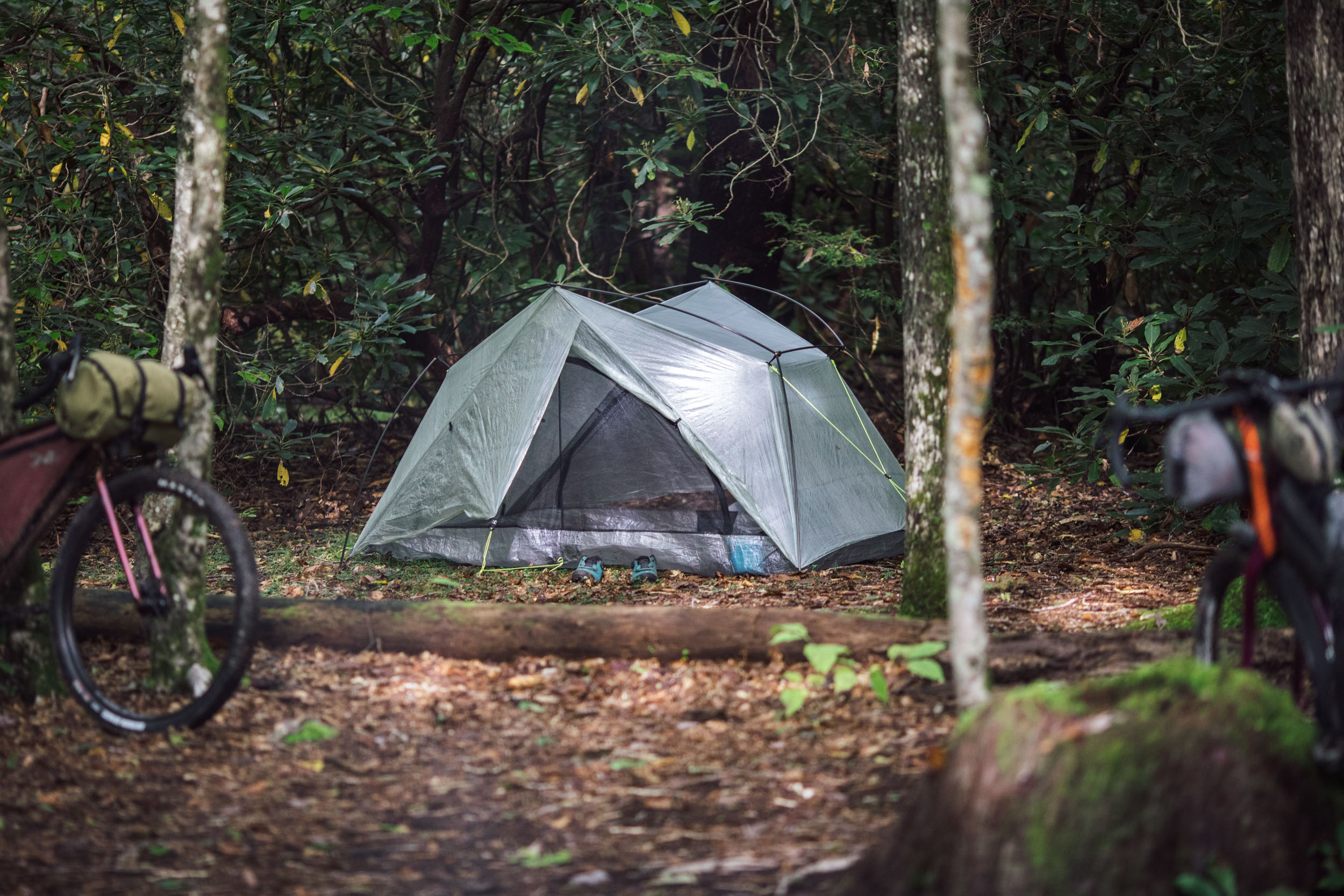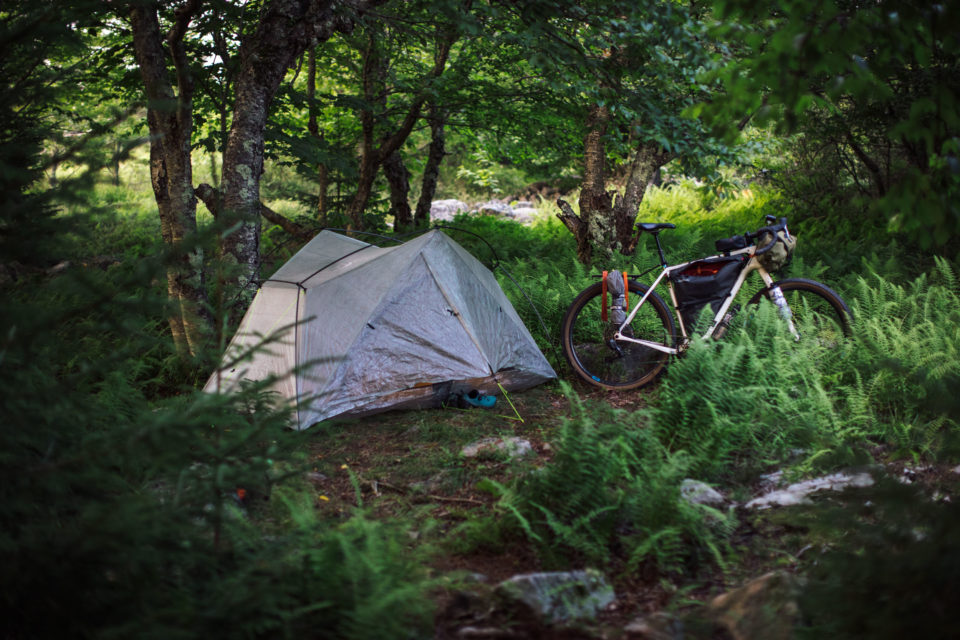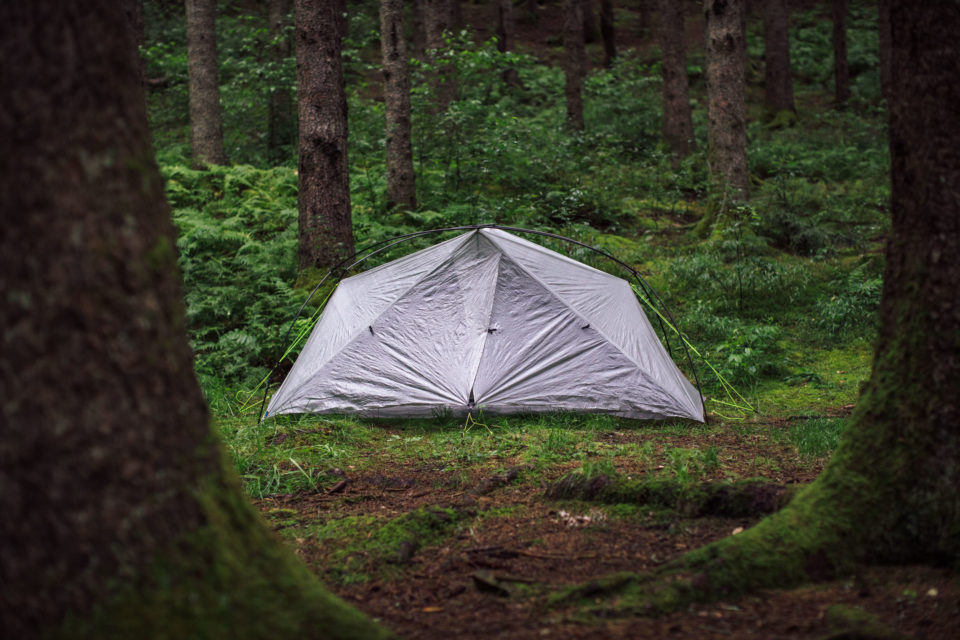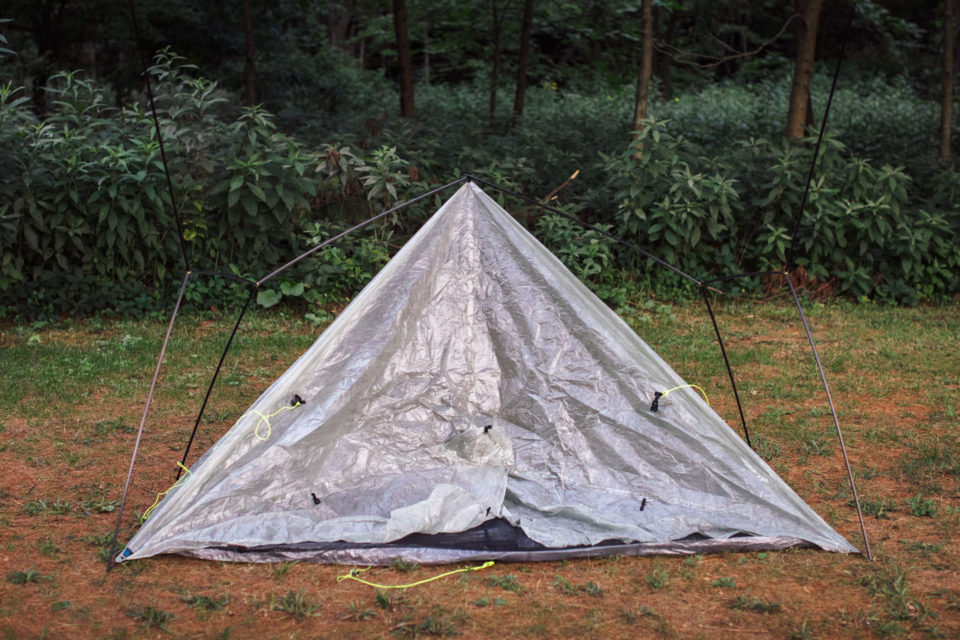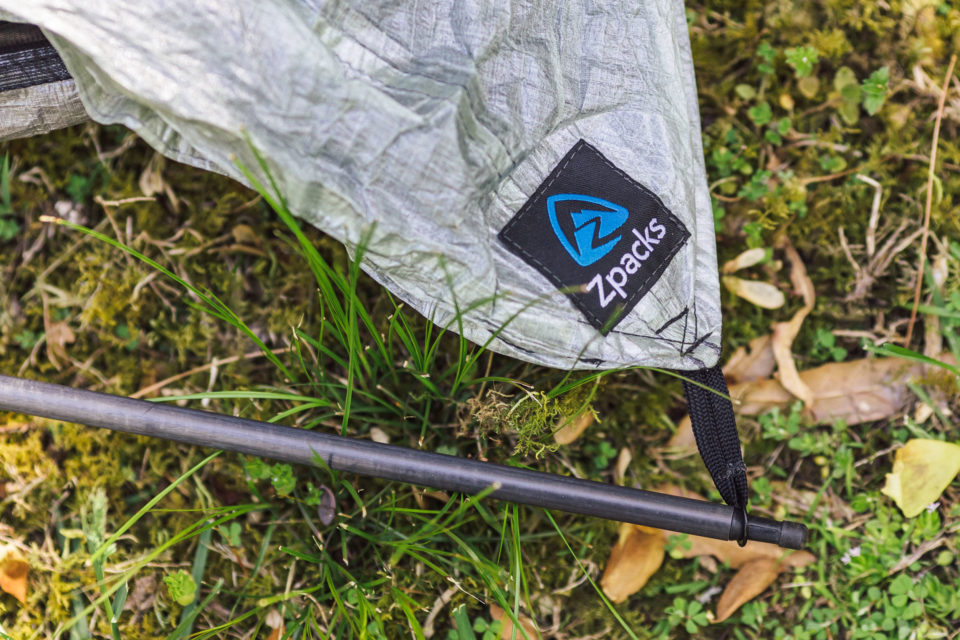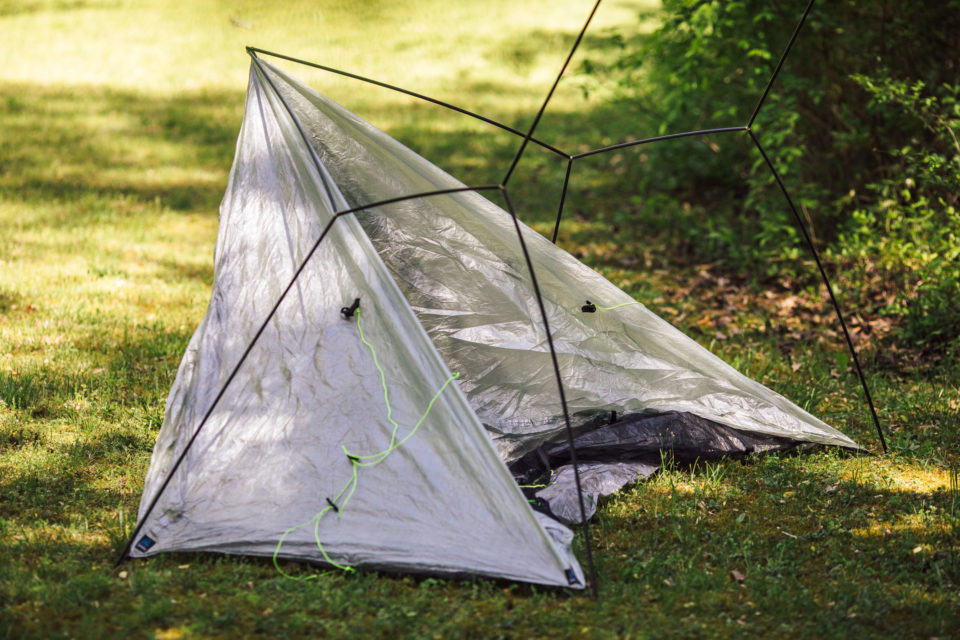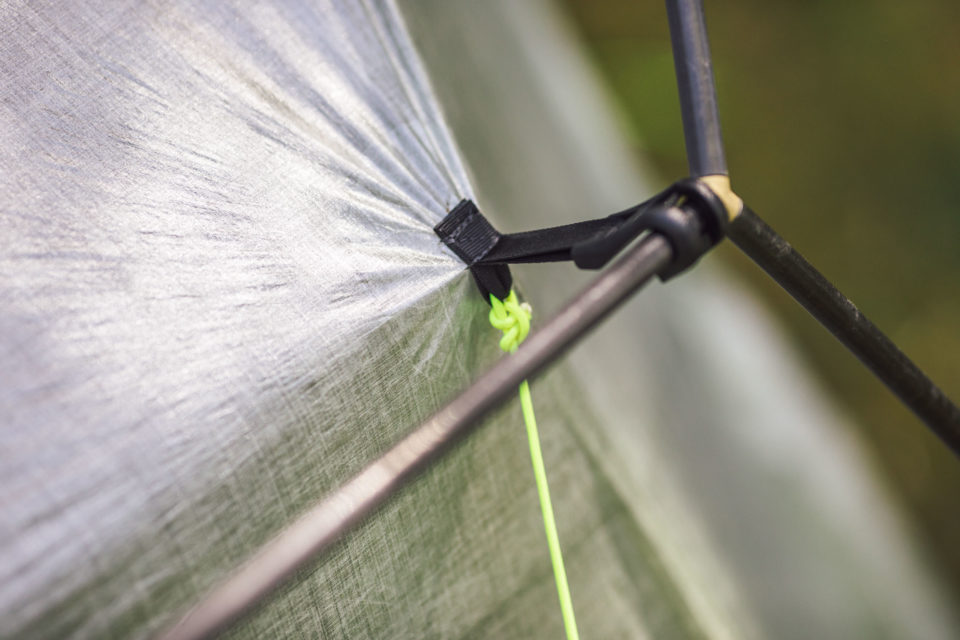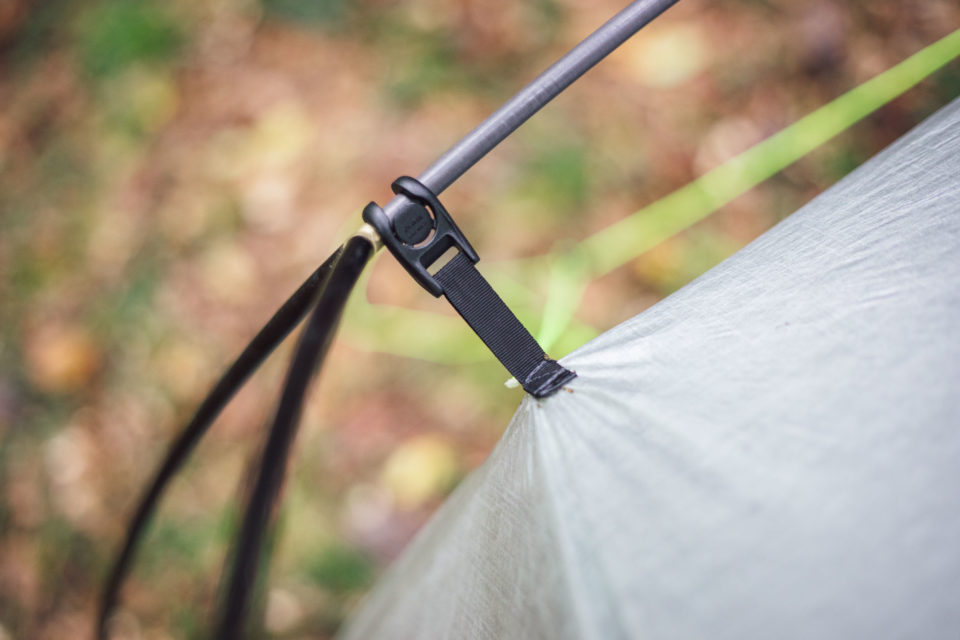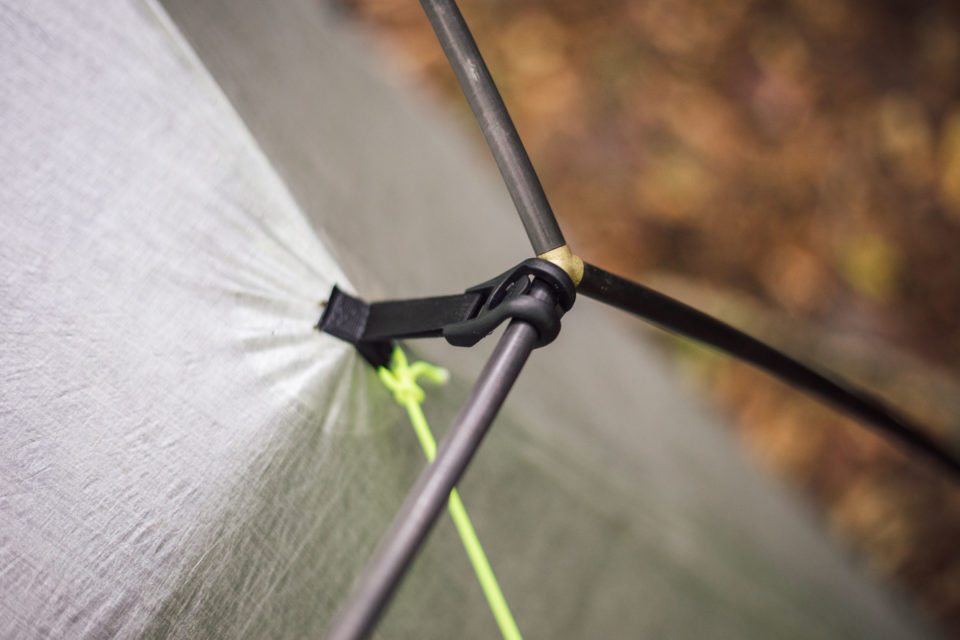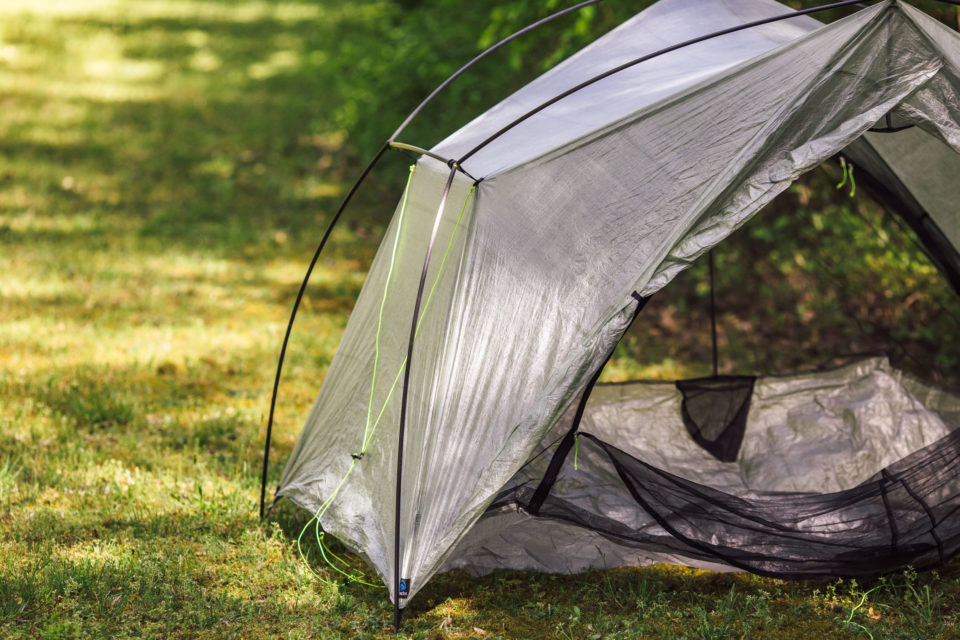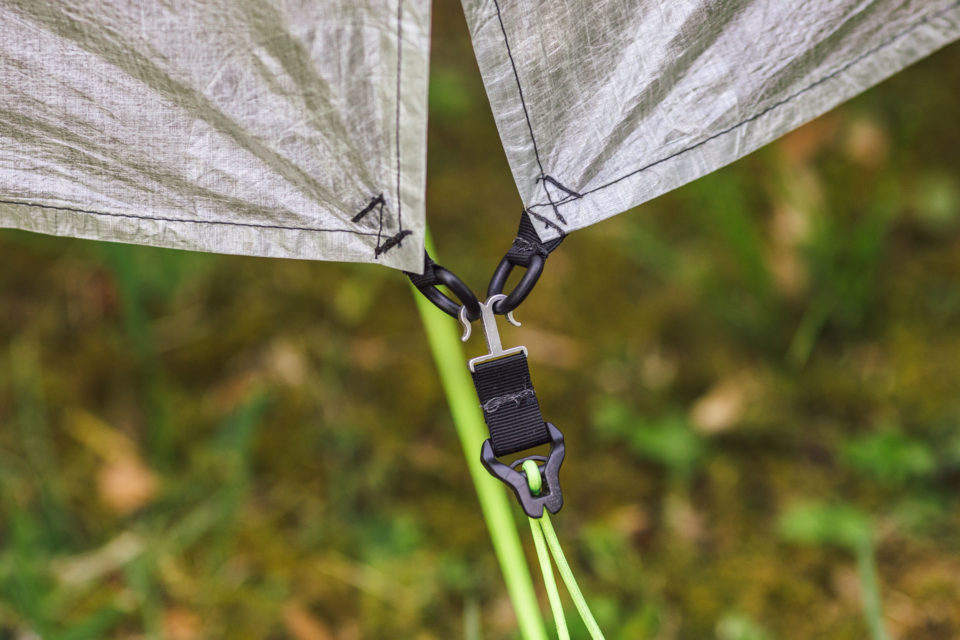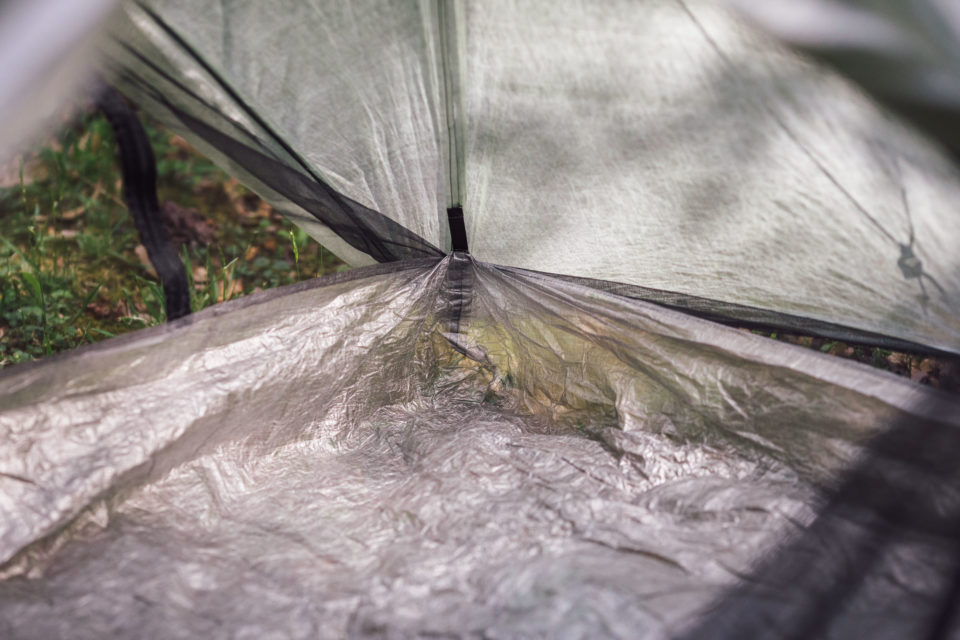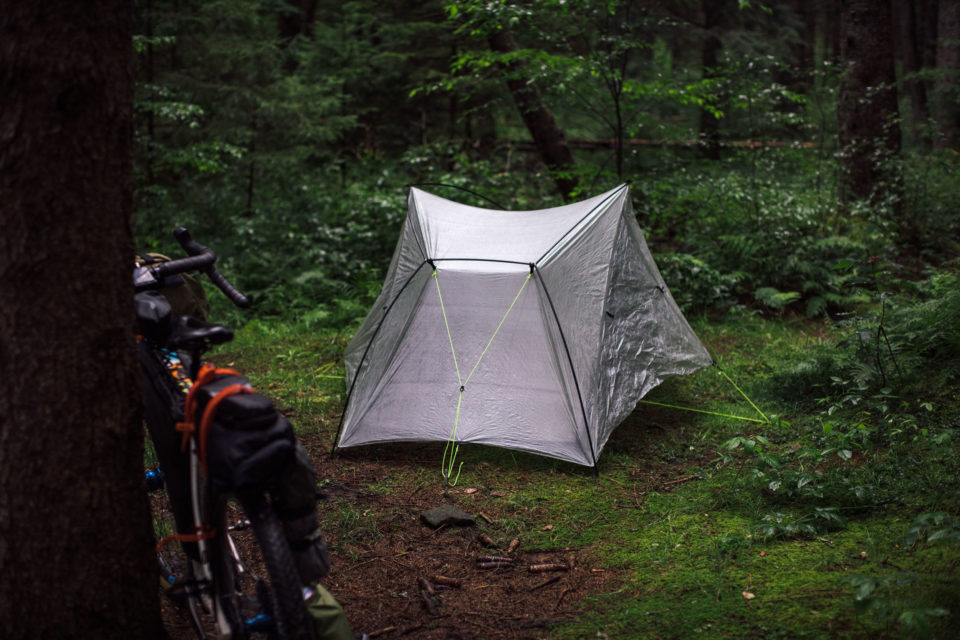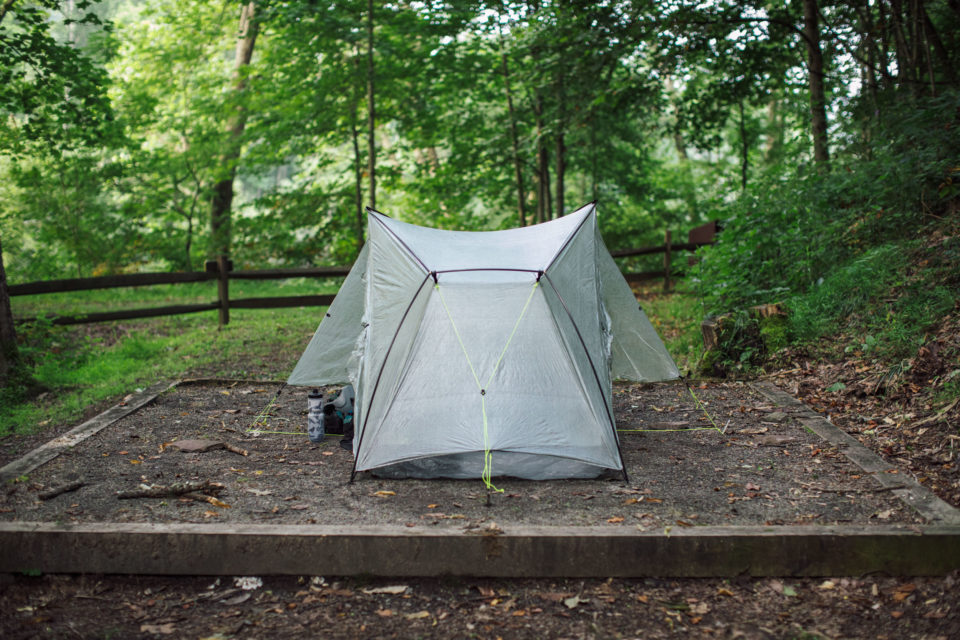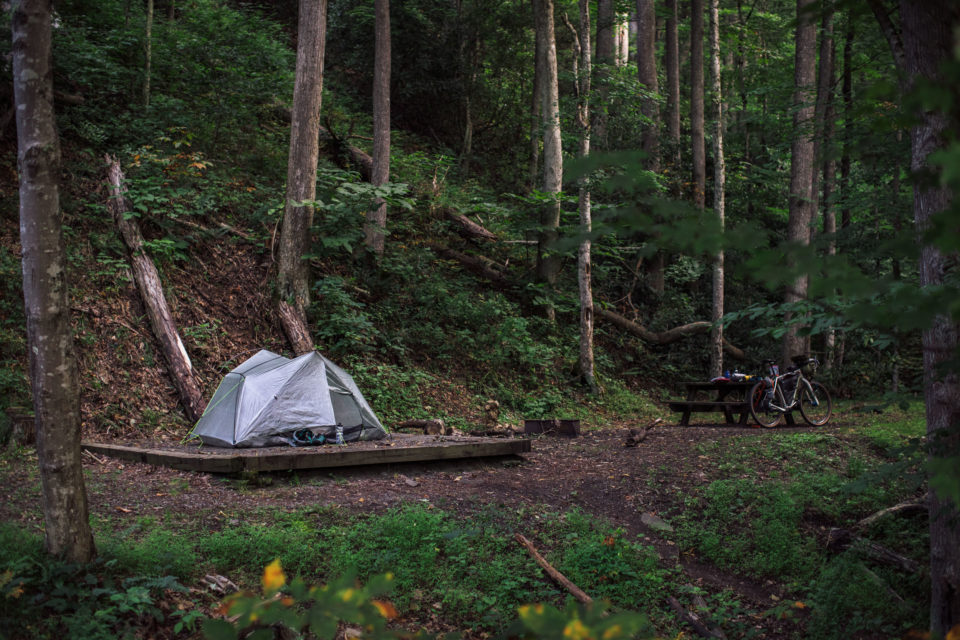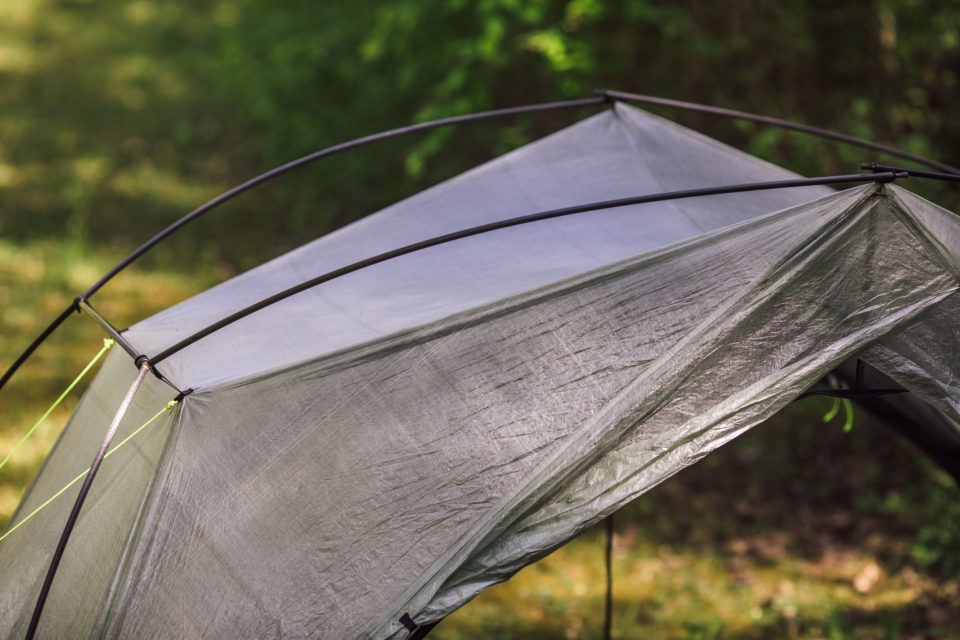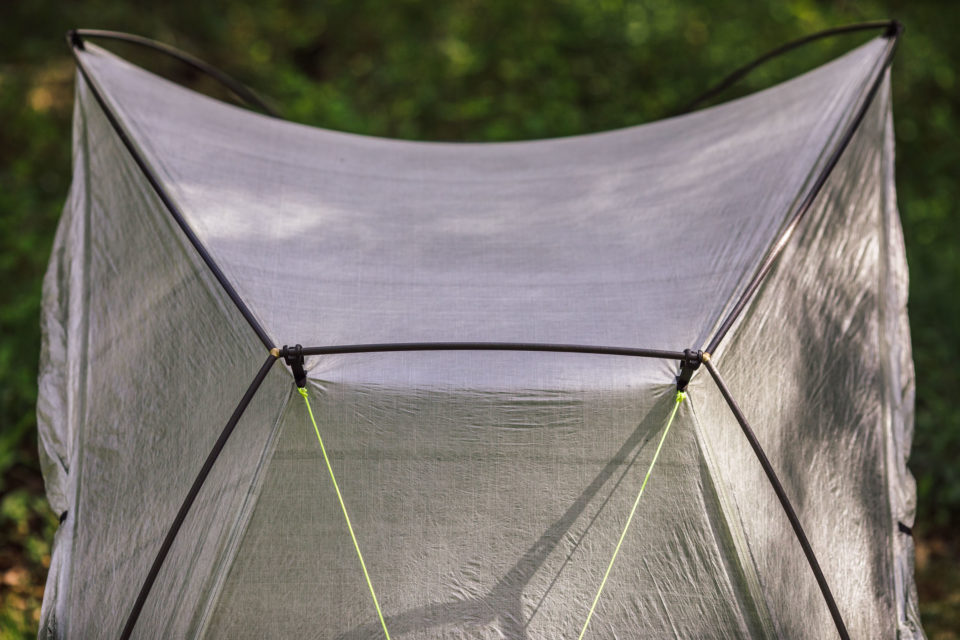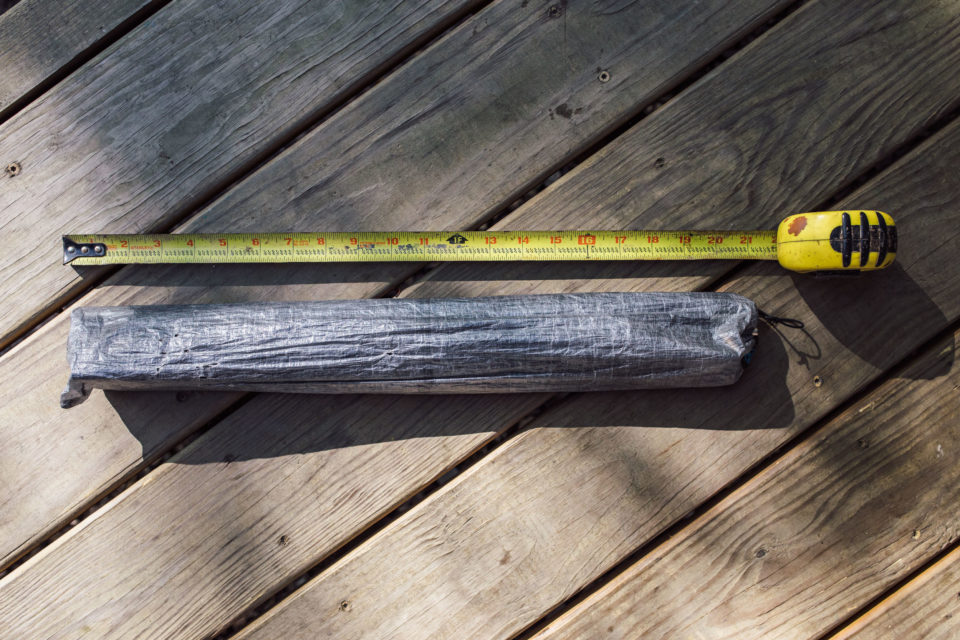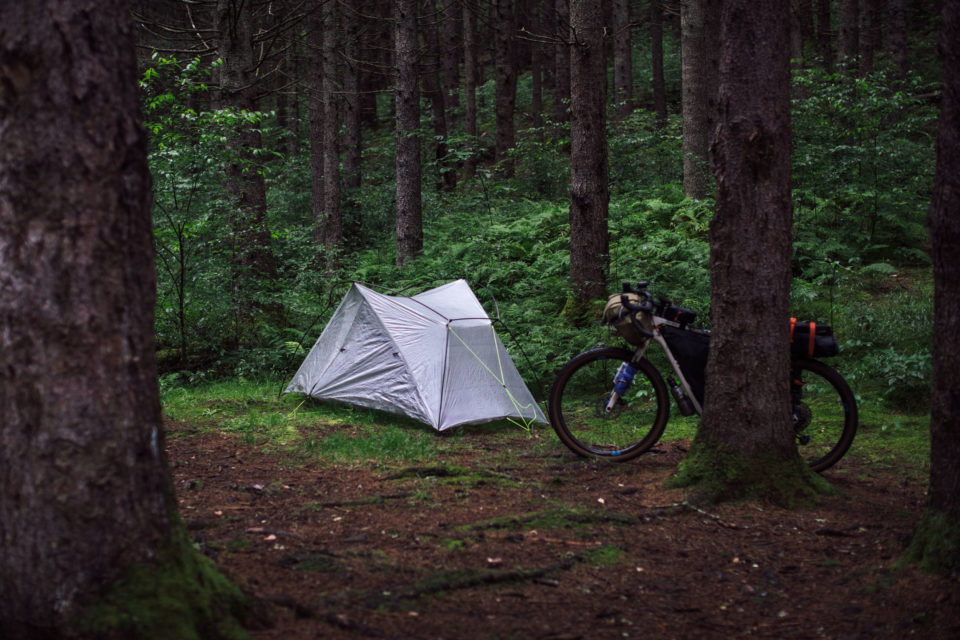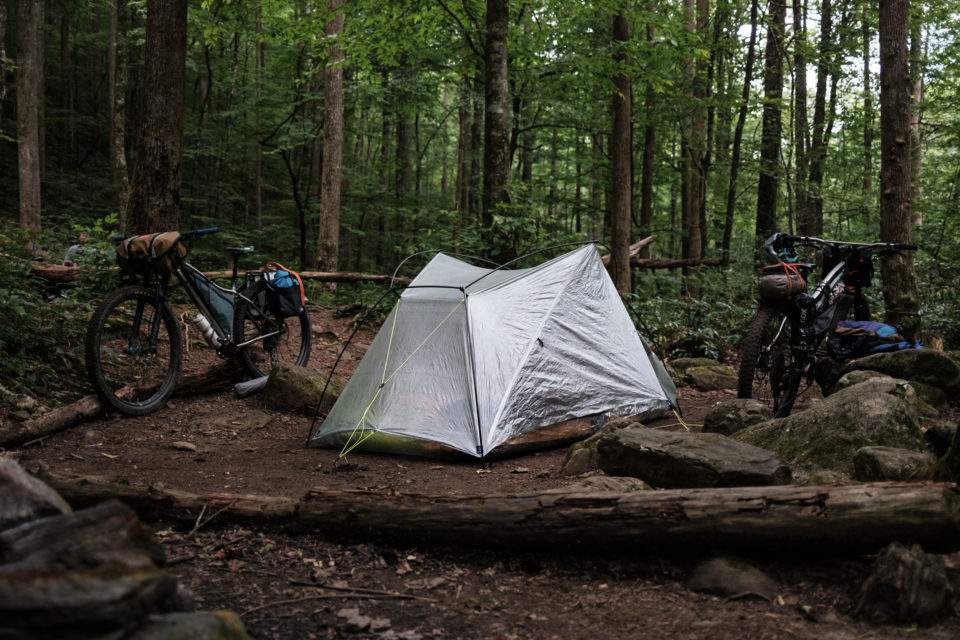Zpacks Free Duo Tent Review
Share This
The sub-two-pound Zpacks Free Duo is an ultralight, versatile Dyneema tent that offers something few others in its weight class can: a completely freestanding design. We tested one for nearly a year in a broad range of conditions for this long-term review. Also, find a weight and price comparison to several other freestanding tents on the market…
Ask any 10 long-term bike tourers what features are important when it comes to a tent and you’ll likely hear at least nine of them mention the word freestanding. And with good reason. By its very nature, bicycle travel often puts you in locations where it’s not easy to set up a tent that depends on stakes to pitch. These predicaments can come in the form of sand, rocky or rooty terrain, tight spaces, concrete pads, wooden porches, or bedrock, to name only a handful. Just the other night on a scouting trip I broke a tent stake as we camped on an old roadbed that had a hearty underlayer of rail ballast. Fortunately, there are a few freestanding—and partially freestanding—tents on the market. The downside is that they often come with a weight penalty. Announced just a year ago, the Zpacks Free Duo aims to change that with a fully freestanding tent in a sub-two-pound package. I’ve been testing one for the last 10 months for this review.
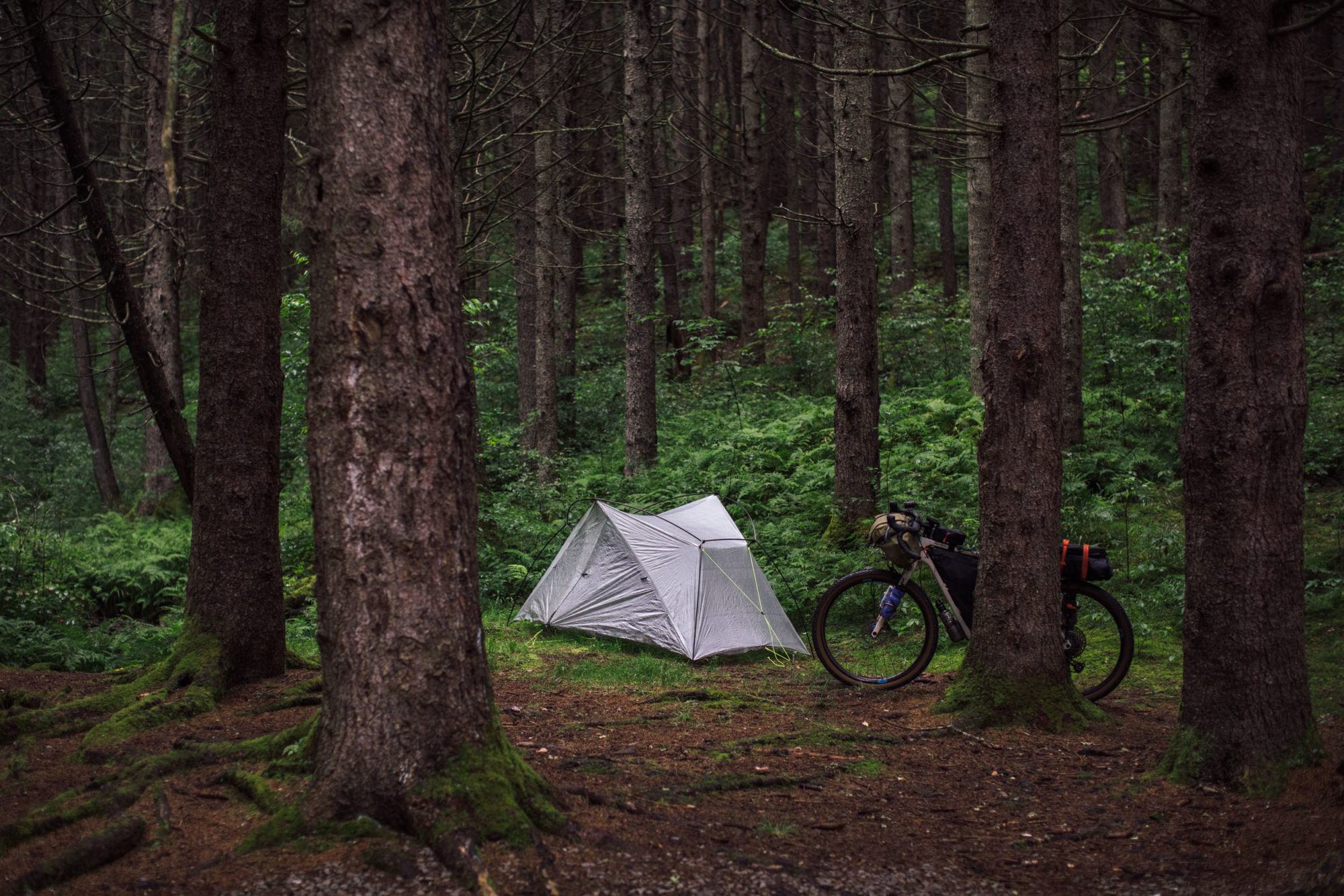
Florida-based Zpacks is best known for their lineup of ultralight Dyneema Composite shelters, most of which are non-freestanding designs that rely on a stake-intensive and trekking-pole-requisite layout to pitch. In 2015, they released a freestanding conversion kit for their popular Duplex tent, which consisted of four poles to transform it into the Duplex Flex. I reviewed it a few years ago and found a lot to like about it. However, it was no match for high winds and bad weather with only the freestanding poles. Two clear examples came during our trip to Kyrgyzstan. On one occasion, overnight snow caused the tent to collapse due to the load. Then there were the insane winds in the high grasslands, which literally squashed it, bending the poles to the ground. I later figured out a solution to this issue—carry two extra trekking pole replacements to shore it up at the peak. However, this wasn’t ideal considering it added a bit of extra weight and space to the kit. Luckily, Zpacks answered the call with the Free Duo Tent and its completely new pole design. The Free Duo now takes the spot in the company’s range as the best-suited option for demanding, high-wind situations. Before we get into how it fared against the elements, let’s start with a brief introduction and some notes on setting it up.
Construction and Setup
The Zpacks Free Duo is a fully enclosed, single-wall tent that features two full rainbow doorways, two vestibules, four storm door entryways, and two carbon pole assemblies. The 6” (15 cm) tall bathtub floor measures 42” wide x 7.5’ long (1.07 m x 2.29 m) and is designed to fit two people and two regular size sleeping pads. The Free Duo is constructed from 0.55 oz/sq yd Dyneema Composite and is available in six different colors (Blue, Olive Drab, Spruce Green, Burnt Orange, Dirt, and White). The entire system weighs in at 856 grams (1lb 14 oz) including tent poles, guy lines, sewn-in line locks, taped seams, and stuff sacks for the poles and tent. Stakes aren’t included, and unlike the majority of their other tents, the Free Duo can’t be set up with trekking poles. Rather, it relies on two H-shaped Easton Carbon 6.3 tent pole structures. At first, I found these to be a little confusing, but after doing it a couple times, it’s easy and very fast to set up.
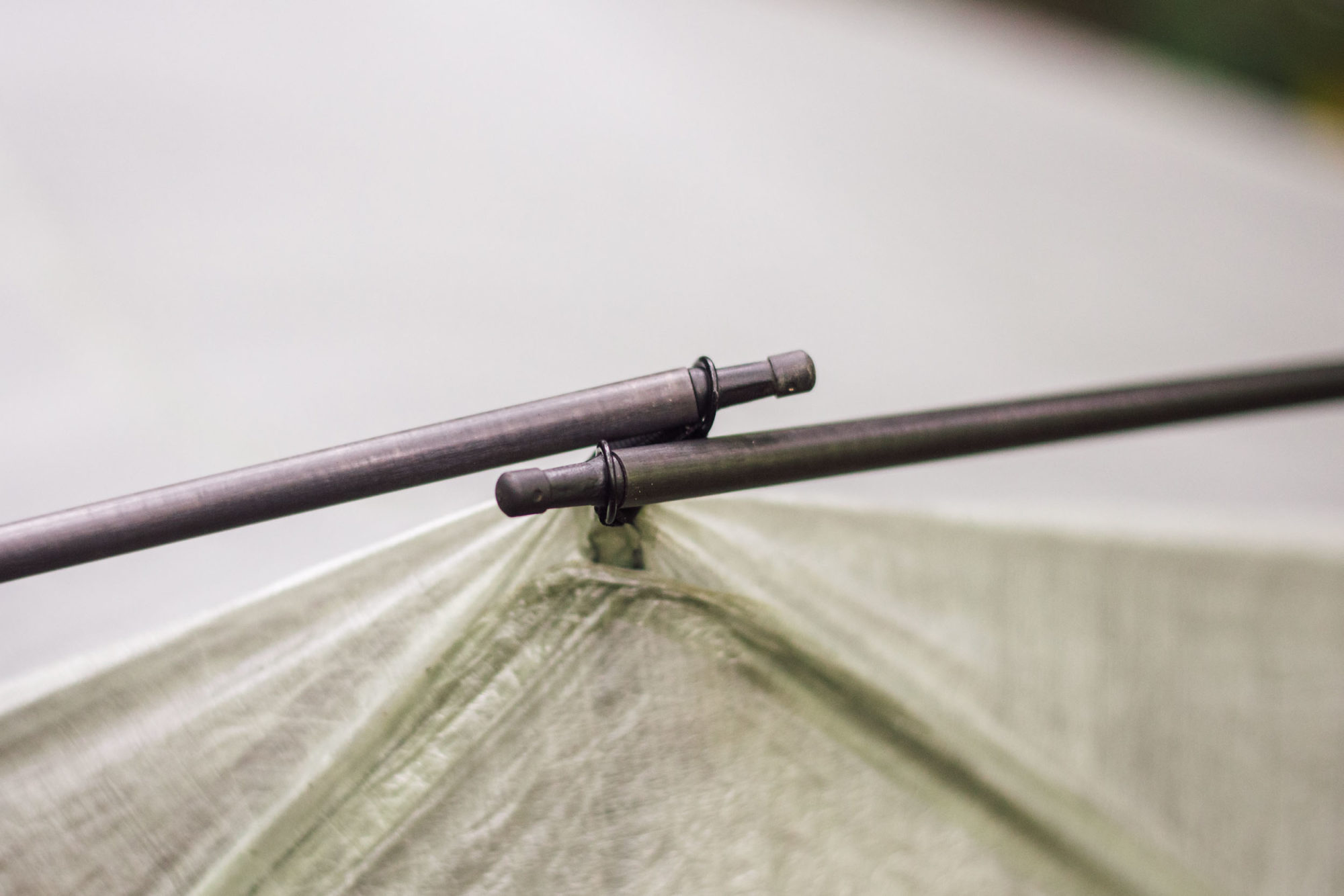
The best way I found to do it is put together both the H-pole assemblies and connect the notched ends to the small circular pole receptacles at each of the tent’s corners. Then, you can lift the peak ends of the poles up on one side and thread them through the receptacles at that peak. From there, you just walk around the other side and connect those. Lastly, you connect each of the four hooks to the H crossbar. Bam. It’s worth noting that hooking the crossbars produces a lot of tension where the hooks are connected and the Dyneema almost has a drum-like tightness. That tension decreases a little over time, but it initially had me a little worried.
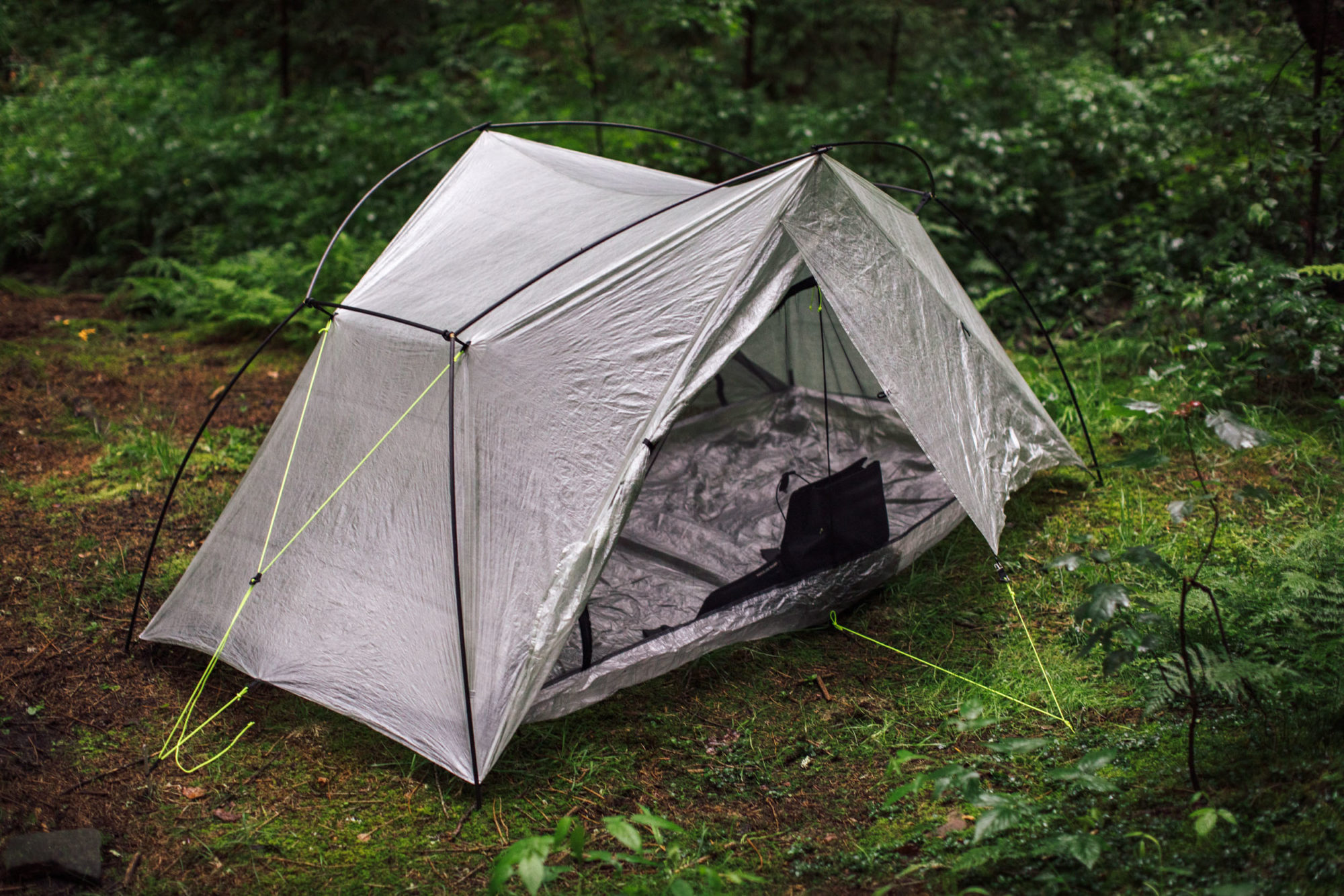
The Free Duo has four outer storm doors that can open independently. Each has a small grommet on the corner that connects to one side of the anchor-like double hook on the guy line that must be staked 24” (61mm) out from the tent side. This configuration allows you to pitch a half or full vestibule on each side. In the event of nice weather, you can simply leave the tent completely unstaked and expose the screened entryways by rolling up all four doors and using the toggles to hold them in place. Technically, you could leave it at that and be ready to go, without any stakes. However, there are two additional guy lines at either end of the tent that also help pull the body of the tent taught to add a little space at the head and foot, so you’ll likely want to do that if you can. If there is foul weather, or you just want to keep the dew off of gear in the vestibules, you can use four stakes—one for each pair of vestibule doors, and one at each end for the two guy lines. In the event of heavy weather, you may also want to stake the four corners (eight stakes total). I didn’t have to take those precautions and found that four stakes were sufficient, even when it was pretty windy and rainy.
All in all, setting up the Free Duo is pretty easy and straightforward. But, like the Duplex Flex, you have to adjust the leg placement a little and fiddle with the line tension to get the storm flaps taught. Most of the time I didn’t bother, which is why the flaps appear loose in some of these photos.
Weather, Wind, and Ventilation
During my time with the Free Duo, conditions never quite matched the wind and snow we encountered in Kyrgyzstan when I was testing the Duplex Flex. That said, there were a few nights with plenty of torrential rain and some significantly gusty winds. It’s a very sturdy tent, and I’m nearly positive it would do fine in the strong winds and snow that squashed the Duplex Flex. The Easton Carbon 6.3 poles used for the Free Duo are thicker and stronger than the Easton Carbon 3.9 poles used on the Duplex Flex, and the pole layout creates a far sturdier structure using the length of the tent and the two peaks for leverage. Additionally, the the tent body comes down nearly to the ground at the ends to help block the wind. In tandem with the high bathtub walls, it does a good job at keeping the wind off you during the night if you need to have it sealed up. Although, with the large mesh doors and mesh vents built into the head and foot of the tent’s floor—where the bathtub connects to the awning—it’s definitely a 3-season tent.
It also does a great job keeping out water. The tarp overhangs the bathtub floor by several inches to keep out any splashing rain. And the deep bathtub floor is a godsend when things get dicey. On one occasion, we set up in a pretty bad location thinking that there was only a 10% chance of rain that evening. When the monsoon broke out, we all huddled under a friend’s tarp nearby. When the rain subsided, we walked over and found the Free Duo surrounded by about three inches of standing water. We quickly unstaked it, picked it up (with all our sleeping gear inside) and moved it to higher ground. None of the gear inside was wet at all, thanks to the bathtub serving as a complete water barrier.

One thing to consider is that the roof between the H-bars is relatively flat compared to other tents. As such, water has a tendency to bead up and sit there during misty or drizzly conditions, and snow, too. Dyneema is very waterproof, so I haven’t had an issue with it “wetting out” and soaking through, but it’s worth noting.
My preferred way of setting up the Free Duo during fair weather is to stake the two vestibule guy lines on either side, and the other two fore and aft guylines, then have a half vestibule on either side to keep gear out of the dew and overnight condensation. This allows proper ventilation on both sides and generally keeps the interior free from condensation. It’s also worth noting that the top of the poles pull the tarp out four or five inches byond the bathtub floor on either side, so during a windless light rain, or under wet trees, the storm doors can be left open for air flow without water dripping into the floor space. And as with most single-wall tents, condensation is always an issue if you leave the doors closed. I’ve found that it breathes well with two doors left open. And with a full wall left open, it’s even better. Fortunately, if you must keep the doors closed and condensation builds up, the steep head and foot walls and long footprint generally keep water off your sleeping bag, although I found that the occasional drip can come off the flatter part of the ceiling. As with any Dyneema single-wall tent, your best bet is to carry a sponge or chamois to dry it out before you pack up.
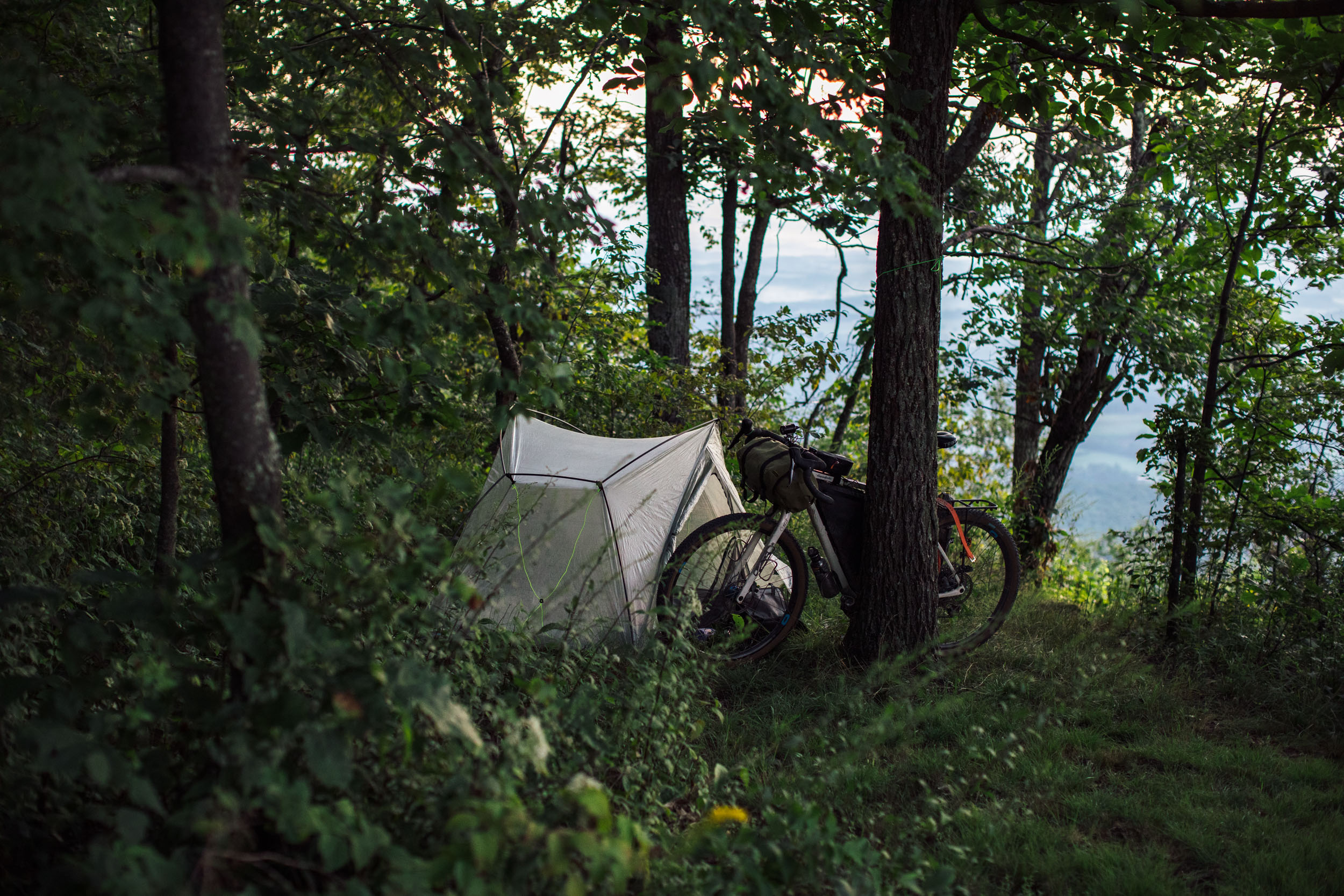
Room enough for…
The 42” wide x 7.5’ long (1.07 m x 2.29 m) floor is designed to fit two adults side by side on standard width sleeping pads. Note that this is three inches narrower than the Duplex. And it actually feels a little smaller, too. Virginia and I slept in it on several trips and it feels a bit cramped with two people. Sure, both regular sleeping pads fit, but there’s not any room for gear or clothing on either side. It’s plenty long to fit a few items at your feet or head, however. And, the dual vestibules help, although they are only about 16” (41cm) deep at the peaks. It’s also nice having complete access to the vestibules and the outdoors via the massive full-zip rainbow doors, which give it a roomier feel.
All that said, I would consider the Free Duo to be ideal for one person to be able to live comfortably and spread out with gear. I used it on a couple of big solo trips and several overnighters by myself and it’s one of my favorite one-person tents that I’ve used, especially considering it weighs the same or less than many other true ultralight one-person tent options on the market. I’m 6’ tall on the nose and the Free Duo’s nice long footprint coupled with the generous space provided by the steep head and foot end walls provides plenty of room lengthwise to stretch out. I never had a problem with getting my sleeping bag wet during condensation events. There’s plenty of room to sit up, hang out, or change clothes in, although if you are any taller than me, you might have to slouch a bit to not rub your head on the ceiling. It’s about 36” (92cm) high at the middle of the tent and 41” (104cm) at each of the side peaks.
Packability
The Zpacks Free Duo comes in two parts within two stuff sacks: the tent body in an oversized thin Dyneema bag, and the poles in a long Dyneema bag of their own. The tent body is about 16 x 5” (41 x 13cm) when rolled up and can compress even further, getting smaller than many one-person tents I’ve used. It can also be rolled up shorter and fatter to accommodate various bags. However, at 21” (53cm), the poles are quite long and generally speaking can’t really fit into most bikepacking bags, other than a long handlebar roll, such as the size large Revelate Pronghorn drybag. Otherwise, they need to be strapped to a rack, bike frame, or the outside of a handlebar bag.
Zpacks Free Duo vs. Other Freestanding Tents
I’ve made a few notes comparing the Free Duo with the Duplex Flex in this review, but what about other fully-freestanding tent options? Truth be told, I haven’t tried that many that compare directly, aside from the Copper Spur line from Big Agnes. Here are a few somewhat mainstream options for price and weight comparison:
Zpacks Duplex (with Flex Kit) / 1lb 13oz (829g) / $724
Big Agnes Copper Spur UL2 Platinum / 2lb 10oz (1.19kg) / $600
Big Agnes Copper Spur UL2 HV / 3lb 2oz (1.42kg) / $450
MSR Hubba Hubba NX / 3lb 8oz (1.59kg) / $450
Sea to Summit Telos / 3lb 11oz (1.67kg) / $500
Terra Nova Voyager Ultra 2 / 2lb 5oz (1.05kg) / £1,800.00
If anyone has any other two-person freestanding tent options to share, leave them in the conversation below…
- Actual Weight: 856 grams (1lb 14 oz)
- Place of Manufacture: Florida, USA
- Price: $699
- Manufacturer’s Details: Zpacks.com
Pros
- Completely freestanding and easy to set up
- Excellent space for one person with the weight of an ultralight 1p tent
- Handles weather and wind well
- Bathtub floor is durable and waterproof; no need for a footprint
Cons
- Poles are too long for most bags; and might need to be strapped externally
- Expensive
- Not roomy enough to fit two people comfortably
Wrap Up
First, the elephant in the room. The Zpacks Free Duo is very expensive, as are most Dyneema tents. No doubt, 700 bones is nothing to shake a stick at when it comes to buying a shelter. However, it’s made in the USA out of durable, high-dollar material. And if you’re looking for a tent to accompany you on a big tour, that price tag may seem like a valuable investment to shave off a pound or so from your kit and get a very comfortable and well-performing shelter for the road. As far as durability, I’ve put a ton of nights in it and there are no signs of wear in the high-tension areas, or elsewhere. For what it’s worth, Zpacks offers a two-year manufacturer’s warranty with their shelters.
In case you missed it, the Free Duo won a slot in our Gear of the Year Awards for 2020, so it’s probably no secret that I really like it, particularly when I’m rolling solo. It’s not without cons, the biggest being the length of the poles. But with a front roll, the poles are a non-issue. And there’s plenty to love about the Free Duo, including the fact that it provides loads space for me and my gear with the weight of a one-person shelter, it’s quick and easy to set up, and, of course, it’s freestanding, so you can pitch it absolutely anywhere.
A note on color: Zpacks sent the plain or “White” Dyneema version to test. As with most Dyneema tents, it’s very translucent, and this color option is by no means stealth. If I were to purchase a version of this tent, I would consider the Olive Drab or Dirt color. It’s nice that there are options.
Please keep the conversation civil, constructive, and inclusive, or your comment will be removed.






